Insertion of a carbene would usually be followed by withdrawal of the tool and detachment of the final carbon. It is therefore necessary to add a carbon to the end of the tool to refresh it. We can transfer a dimer from the end of a polyyne to the end of a cumulene using the following method. First, bond the end of the cumulene and the polyyne. The resulting structure is somewhat schizoid. The left end is a cumulene and the right a polyyne, but where the change takes place is not always clear. We can shift this point by using a silicon radical. We can also weaken the bond we wish to break by using an appropriate transition metal catalyst. Force applied to the ends will now cause the linear carbon sequence to break, presumably at the transition metal. This sequence of reactions is illustrated below:
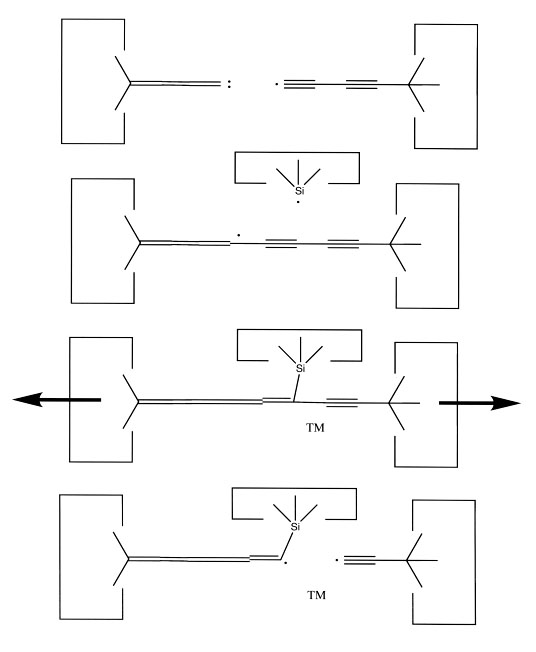
Reactions 9 and 10
This sequence adds two carbons to the end of the carbene insertion tool, thus refreshing it. If we wish to increase the number of carbene insertion tools (note that we added carbons to a carbene insertion tool, but did not increase their number) we could take the lengthened carbene insertion tools and attach them to a diamond surface: the (100) surface seems particularly attractive for this purpose. Breaking the resulting cumulene would then produce two carbene insertion tools when before there was only one.
We will sometimes wish to transfer a single carbon atom from the end of one cumulene to another (rather than transferring a dimer consisting of two carbon atoms from a polyyne to a cumulene). Two cumulenes are joined, and then separated. The point of separation is different from the point where they were joined. The point of separation is controlled by the point at which two silicon radicals are applied to the cumulene strand. This is illustrated in the following sequence:
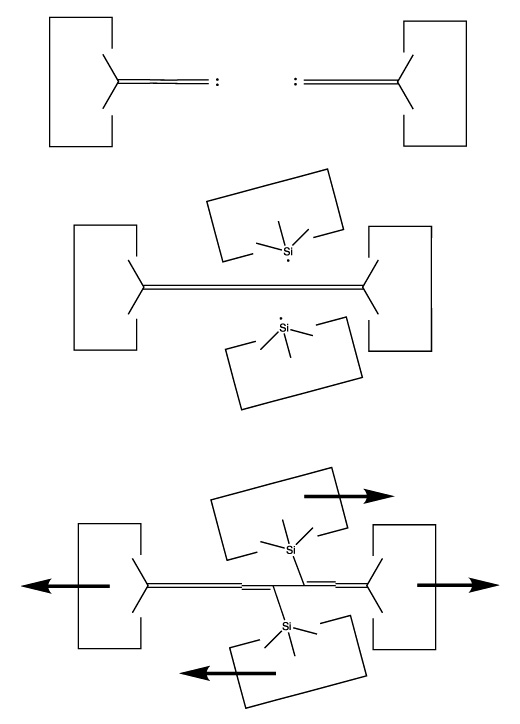
Reactions 11, 12 and 13
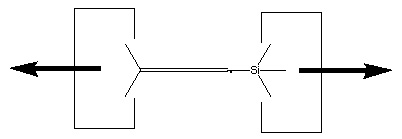
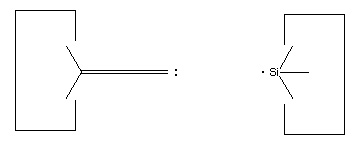
Reaction 14




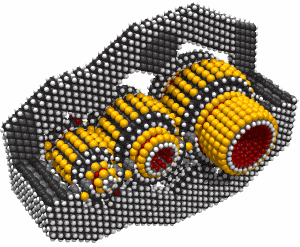
No comments:
Post a Comment